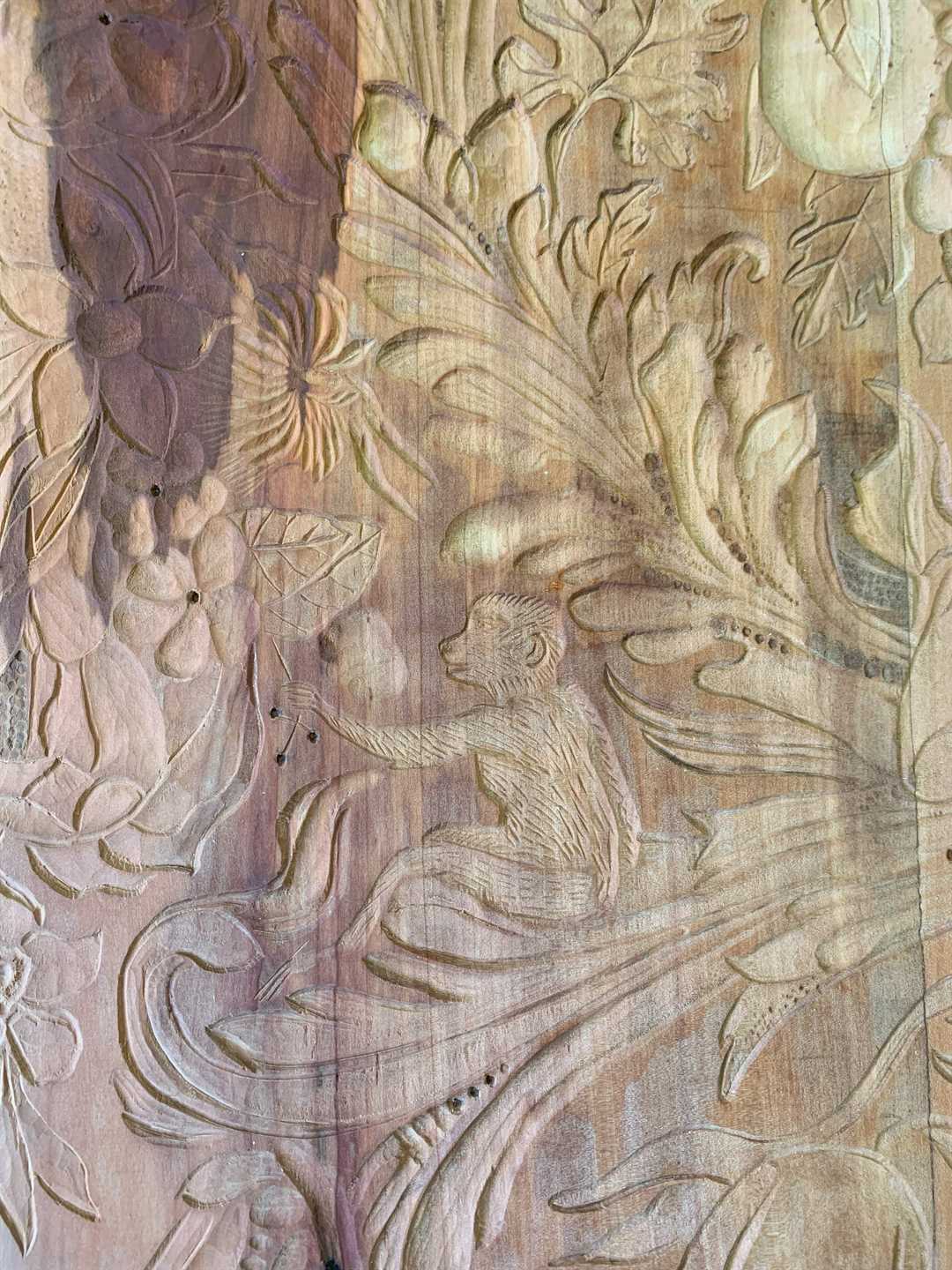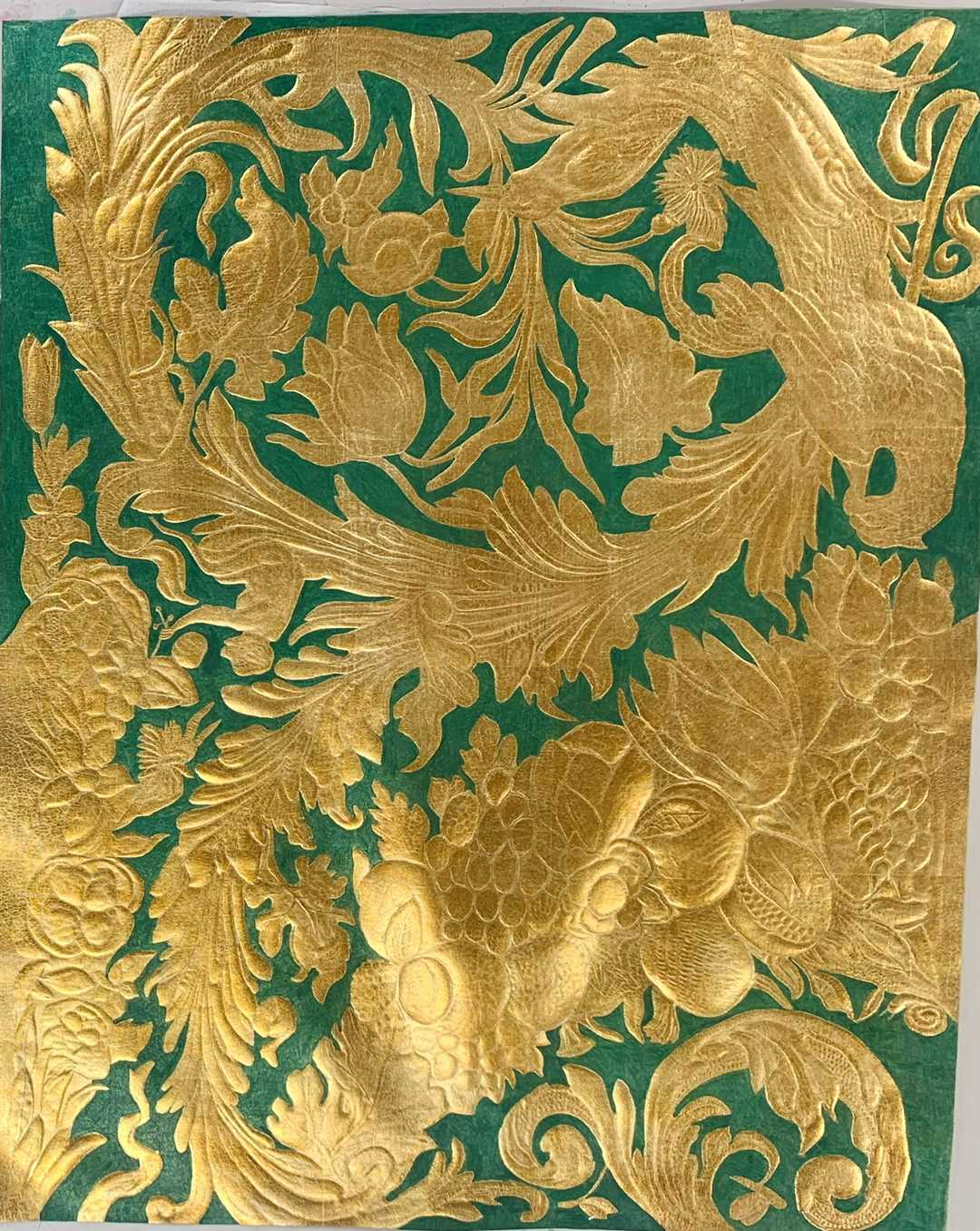Enter a search term above to search our website
Pages
News
Star Objects
In previous media releases we shared with readers the plan to reconstruct the panel of 16th century leatherwork that survives from Huntingtower Castle, Perth, for display in the new Perth Museum. The panel is shown here as figure 1. A very luxurious form of wallpaper.

Since then we have shared posts by woodcarver Tom Jennings, who made the inverted pattern (out of pear tree wood) needed to press the design into the leather (Tom has posted about the pattern on his Facebook page). The pattern is shown here as figure 2. Courtesy of colleagues at Historic Environment Scotland, we have also carried out portable X-ray fluorescence (pXRF) analysis of the leather to help determine the colour pigments and materials used to decorate the design. HES have commissioned a further replica panel for display at Huntingtower Castle.

Now we can reveal the completed panel (figure 4) in all its glory, after completion by the Leather Conservation Centre in Northampton.

Rosie Bolton, of the Centre, comments:
“We replicated the panel using traditional techniques, following in the footsteps of makers in historic gilt leather workshops.
Firstly, silver leaf was applied to the grain surface of the vegetable tanned bovine leather (see figure 3), which was then wetted and embossed in the hand carved pear wood mould to create the raised pattern. A yellow varnish was applied to the silver leaf to create the golden hue, and background areas were painted using oil paint in the manner of the original panel to bring out the abundant motifs in the pattern. It was really fantastic to be able to carry out each of these processes using traditional methods, learning first-hand how and why the process developed the way it did, and how intuitive some of the techniques are.
We rarely see gilt leather panels which have not become tarnished over time, so experiencing first-hand the vibrance and vividity of a brand-new panel really allows us to understand how rich and opulent some of the dwellings featuring this type of wall hanging really would have felt.”
The new panel will be on display alongside the original fragment in the new Perth Museum and we look forward to welcoming you all to come and see it after it opens in 2024.